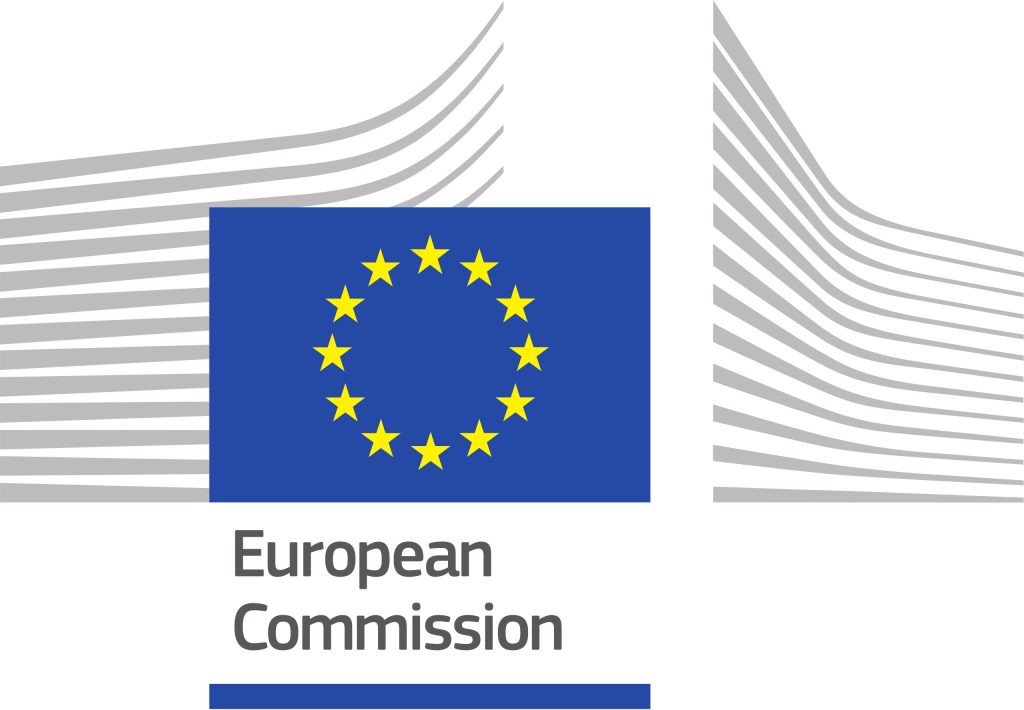
Demonstration and deployment of multi-purpose Hydrogen Refuelling Stations combining road and airport, railway, and/or harbour applications
Expected Outcome:
Hydrogen Refueling Stations are an essential element of the future hydrogen mobility. For widespread hydrogen mobility to be viable, it will be essential to provide a nationwide network of publicly accessible HRS for passenger cars, trucks, buses, vans, etc. all over the EU. Furthermore, larger heavy duty fueling applications such as trains, harbours, and airports will require very reliable, high-capacity stations capable of delivering many tons each day in a safe manner.
Thus, it is fundamental to develop and optimise HRS (especially for trains, marine and airport applications), situated on depots, with corresponding captive demand for large-scale hydrogen. This concept assumes the provision of pressurised gaseous and/or liquid hydrogen together with the development of appropriate and reliable systems for lifetime prediction. Combining multi-mobility ecosystems (railway, maritime and airports) within the same HRS may reduce refuelling costs and supply chain costs. For example, at an airport, hydrogen is supplied for aviation systems (aircraft, ground support equipment, etc.) while hydrogen is available for heavy duty cargo transport vehicles. The project has to be commissioned and tested in order to measure if the technical requirement are met.
The project results are expected to contribute to the following outcomes:
- The deployment of hydrogen refuelling facilities for vehicles (ground support equipment and heavy-duty vehicles fleets) and captive fleets (buses, trains, etc.);
- High public visibility with a growing number of trial and demonstration projects;
- Full integration into the broader energy ecosystem;
- The underpinning of Europe’s leadership in the supply of HRS solutions worldwide;
- The development of new services and the HRS delivery platform;
- The creation of an EU map of hydrogen refuelling stations;
- Improved understanding of common failures at HRS;
- Improved interoperability of HRS;
Project results are expected to contribute to the following objectives and KPIs of the Clean Hydrogen JU SRIA:
- Reduction of CAPEX: 1.5–4k€/(kg/d) (700bars), 0.65-2.5k€/(kg/d) (350bars), 1.5-4k€/(kg/d) (LH2);
- Increased availability: 98% (700bars), 98% (350bars), 97% (LH2);
- Hydrogen price: 3€/kg (700bars), 2€/kg (350bars), 3€/kg (LH2);
- Annual maintenance cost: 0.5€/kg (700bars), 0.35€/kg (350bars), 0.5€/kg (LH2) ;
- Increased reliability (mean time between failures): 72 days (700 bars), 144 days (350 bars), 216 days (LH2).
Scope:
The aim of this topic is to demonstrate a multipurpose HRS able to supply a combination of aviation, rail and/or heavy-duty road applications.
Combining these mobility ecosystems will stimulate the development of a regional hydrogen economy, creating a synergy with public and private actors across the hydrogen value chain (production, distribution, storage, and end-use).
Currently station costs, both CAPEX and OPEX, are high, thus challenging the development of a refuelling station business model, particularly in the early years when utilisation is comparatively low.
Reliability is also low, creating difficulties for customers who cannot rely on their hydrogen supply.
In addition, the approvals and construction processes for hydrogen stations are too slow, while their design is heavily influenced by the respective fuelling protocols developed by each manufacturer, which are not yet fully understood and optimised.
Proposals should respond to the following technical requirements:
- Develop high throughput stations for heavy duty vehicles fleets (trains, buses or trucks, aircrafts, maritime vessels, and associated ground support equipment), including 1,000 to 3,000kg/day capacity and individual fills of more than 200 kg expected in less than 20 minutes; more generally the station capacity should depend on filling station profile (e.g. hourly peak demand is usually around 7% of the daily mass dispensed (for trucks);
- Develop digital models that capture refuelling data in aim to anticipate load curves in the HRS;
- Reduce CAPEX and OPEX by implementing innovative technological components (e.g., compressors, cooling systems, dispensers) and optimising their integration into the design and operation of the HRS;
- The interaction between the HRS and other fleet-specific processes on site or nearby can also be investigated. The control strategy will reduce the energy consumption of the HRS and allow safe and optimised refuelling of the vehicles and will adapt/develop appropriate fuelling protocols;
- Reduce OPEX and increase reliability by developing and testing of condition-based maintenance approaches for key HRS components;
- Facilitate the use of locally produced green hydrogen, e.g., by enabling low inlet pressure and flexible operation for intermittent renewable energies, or production by electrolysis or biomass;
- Develop a pressurised and/or liquid hydrogen supply strategy;
- Implementing appropriate protocols depending on different supply strategies e.g., the development of swap tank containers for distribution and storage;
- Analysis and identification of standardised primary performance metrics of HRS and input to standardisation premiums in order to enable comparison of different HRS;
- Aim to standardise and industrialise HRS equipment and components while developing protocols for safe and reliable refuelling in partnership with OEMs and distributors;
- Include specific targets (beyond the State-of-the-Art) for improved reliability, safety and availability of HRS equipment and infrastructure;
- Address technical certification and levels of education and awareness amongst regulators and other stakeholders;
- Support improved efficiency, with the goal of zero boil-off for LH2 and losses during hydrogen transfer, distribution, and, ultimately, across the whole hydrogen supply chain;
- Provide refuelling of support vehicles within the respective area of use, demonstrating global platform autonomy;
- Develop an understanding of common failures at HRS;
- Quantify the costs incurred when operating an HRS.
Proposals are encouraged to explore synergies with projects within the metrology research programme run under the EURAMET research programmes EMPIR and the European Partnership on Metrology (in particular projects MetroHyVe2, Met4H2 and MefhySto, MetHyInfra and MetHyTrucks).
Proposals are encouraged to explore synergies with the Zero Emission Waterborne Transport (ZEWT) partnership and Clean Aviation JU as this topic has the potential for providing operational and technical solutions for hydrogen refuelling infrastructure in ports and airports.
This topic is expected to contribute to EU competitiveness and industrial leadership by supporting a European value chain for hydrogen and fuel cell systems and components.
Proposals should provide a preliminary draft on ‘hydrogen safety planning and management’ at the project level, which will be further updated during project implementation.
For additional elements applicable to all topics please refer to section 2.2.3.2.
Activities are expected to start at TRL 5 and achieve TRL 7 by the end of the project - see General Annex B.
At least one partner in the consortium must be a member of either Hydrogen Europe or Hydrogen Europe Research.
The maximum Clean Hydrogen JU contribution that may be requested is EUR 8.00 million – proposals requesting Clean Hydrogen JU contributions above this amount will not be evaluated.
Purchases of equipment, infrastructure or other assets used for the action must be declared as depreciation costs. However, for the following equipment, infrastructure or other assets purchased specifically for the action (or developed as part of the action tasks): HRS and related components, costs may exceptionally be declared as full capitalised costs.
The conditions related to this topic are provided in the chapter 2.2.3.2 of the Clean Hydrogen JU 2024 Annual Work Plan and in the General Annexes to the Horizon Europe Work Programme 2023–2024 which apply mutatis mutandis
Specific Topic Conditions:
Activities are expected to start at TRL 5 and achieve TRL 7 by the end of the project - See General Annex B.
General Information
Hydrogen Refueling Stations are an essential element of the future hydrogen mobility. For widespread hydrogen mobility to be viable, it will be essential to provide a nationwide network of publicly accessible HRS for passenger cars, trucks, buses, vans, etc. all over the EU. Furthermore, larger heavy duty fueling applications such as trains, harbours, and airports will require very reliable, high-capacity stations capable of delivering many tons each day in a safe manner.
Thus, it is fundamental to develop and optimise HRS (especially for trains, marine and airport applications), situated on depots, with corresponding captive demand for large-scale hydrogen. This concept assumes the provision of pressurised gaseous and/or liquid hydrogen together with the development of appropriate and reliable systems for lifetime prediction. Combining multi-mobility ecosystems (railway, maritime and airports) within the same HRS may reduce refuelling costs and supply chain costs. For example, at an airport, hydrogen is supplied for aviation systems (aircraft, ground support equipment, etc.) while hydrogen is available for heavy duty cargo transport vehicles. The project has to be commissioned and tested in order to measure if the technical requirement are met.
The project results are expected to contribute to the following outcomes:
- The deployment of hydrogen refuelling facilities for vehicles (ground support equipment and heavy-duty vehicles fleets) and captive fleets (buses, trains, etc.);
- High public visibility with a growing number of trial and demonstration projects;
- Full integration into the broader energy ecosystem;
- The underpinning of Europe’s leadership in the supply of HRS solutions worldwide;
- The development of new services and the HRS delivery platform;
- The creation of an EU map of hydrogen refuelling stations;
- Improved understanding of common failures at HRS;
- Improved interoperability of HRS;
Project results are expected to contribute to the following objectives and KPIs of the Clean Hydrogen JU SRIA:
- Reduction of CAPEX: 1.5–4k€/(kg/d) (700bars), 0.65-2.5k€/(kg/d) (350bars), 1.5-4k€/(kg/d) (LH2);
- Increased availability: 98% (700bars), 98% (350bars), 97% (LH2);
- Hydrogen price: 3€/kg (700bars), 2€/kg (350bars), 3€/kg (LH2);
- Annual maintenance cost: 0.5€/kg (700bars), 0.35€/kg (350bars), 0.5€/kg (LH2) ;
- Increased reliability (mean time between failures): 72 days (700 bars), 144 days (350 bars), 216 days (LH2).


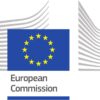
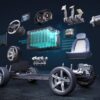
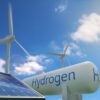
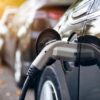
Demonstration and deployment of multi-purpose Hydrogen Refuelling Stations combining road and airport, railway, and/or harbour applications 0 reviews
Login to Write Your ReviewThere are no reviews yet.